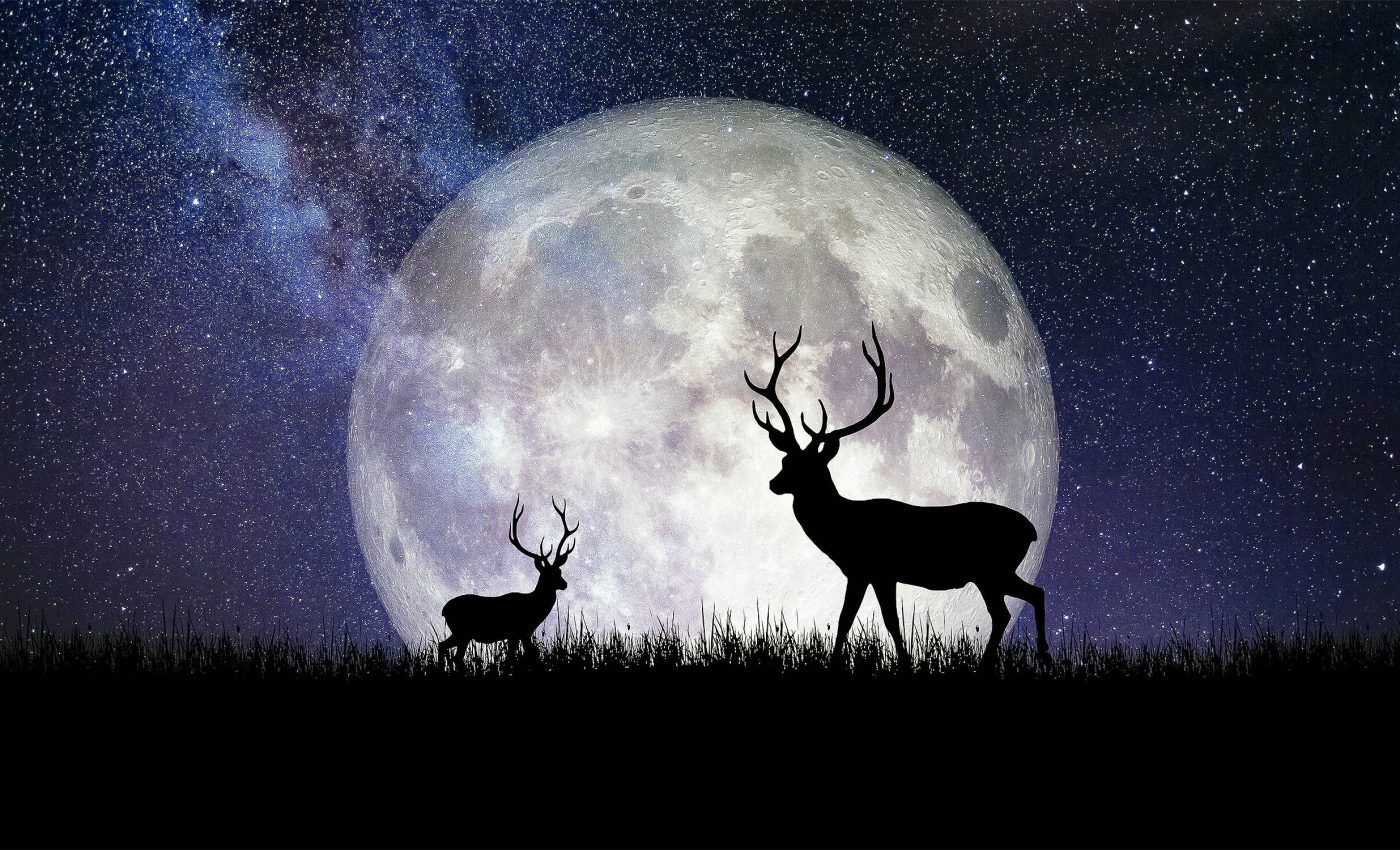
Full moon weekend is upon us as the "Buck Moon" arrives tonight
This weekend, on the 55th anniversary of the Apollo 11 moon landing, the full Buck Moon will light up the sky.
The moon will reach its peak illumination on the night of July 21st, but will also appear full on the 20th, the same day that humans first walked on the moon in 1969.
In fact, according to NASA, the Buck Moon will appear full for about three days from Friday evening through Monday morning – making this a full moon weekend.
Buck Moon illusion
July’s full moon usually appears large and bright – often with a red or orange glow as it rises and sets low in the sky.
When the moon is lower over the horizon, its light travels a longer distance through the atmosphere. This atmospheric scattering of light is similar to what happens during sunrises and sunsets.
“As it travels a longer path, more of the shorter, bluer wavelengths of light are scattered away, leaving more of the longer, redder wavelengths,” explains NASA.
Names for the Buck Moon
The name of the July full moon is associated with male deer, or bucks, who typically grow their new antlers during this month.
“Early summer is normally when the new antlers of buck deer push out of their foreheads in coatings of velvety fur,” notes NASA.
This month’s full moon is also referred to as the “Thunder Moon” due to the frequency of thunderstorms in July. Depending on where you’re from, you might also know it as the “Hay Moon,” in reference to the hay harvest.
“For Hindus, Buddhists, and Jains, this is the Guru Full Moon (Guru Purnima), celebrated as a time for clearing the mind and honoring the guru or spiritual master,” notes NASA.
A bit of astronomical magic
A full moon occurs when Earth is perfectly positioned between the sun and the moon. The result? Our satellite is fully lit up from Earth’s viewpoint. The cycle of the full moon, also known as a synodic month, happens every 29.53 days.
As the Buck Moon rises in the east, it won’t be the only eye-catching sight of the night. Not only will Saturn be visible, but if you have a telescope handy, you might even catch a glimpse of its mesmerizing rings.
Prelude to four supermoons
The Buck Moon is the final “regular” full moon before an exciting line-up of four back-to-back “supermoons” that will appear much bigger and brighter than usual.
These mega-moons emerge when the full moon coincides with its nearest approach to Earth, known as perigee.
The next full moon is the Sturgeon Moon on August 19th, kicking off the first of the four consecutive supermoons.
Full moon myths and legends
The full moon has captivated human imagination for centuries, inspiring many myths and legends across various cultures.
In ancient civilizations, the full moon was seen as a powerful celestial body influencing the natural world and human behavior.
Roman mythology
For instance, in Roman mythology, Luna, the goddess of the moon, was believed to ride her chariot across the night sky, illuminating the Earth below.
Transformation and magic
In folklore, the full moon is often associated with transformation and magic.
Perhaps the most famous legend is that of the werewolf, a creature that transforms from human to wolf under the light of the full moon.
This myth is prevalent in European folklore and has been popularized in modern literature and film.
Buck Moon madness
In many cultures, the full moon is also linked to madness, a concept known as “lunacy.” The belief that the full moon can affect mental health and behavior persists to this day, with some claiming that emergency rooms and police stations see more activity during a full moon.
Agricultural traditions
The full moon holds a special place in agricultural traditions as well. Many farming cultures, such as those in Europe and North America, historically used the phases of the moon to guide planting and harvesting. The Farmer’s Almanac still provides moon phase information for this purpose.
Hindu mythology
In Hindu mythology, the full moon is significant in various rituals and festivals. For instance, during the festival of Holi, the full moon marks the celebration of spring and the triumph of good over evil.
In Buddhism, the full moon day of Vesak commemorates the birth, enlightenment, and death of Buddha.
—–
Like what you read? Subscribe to our newsletter for engaging articles, exclusive content, and the latest updates.
Check us out on EarthSnap, a free app brought to you by Eric Ralls and Earth.com.
—–













